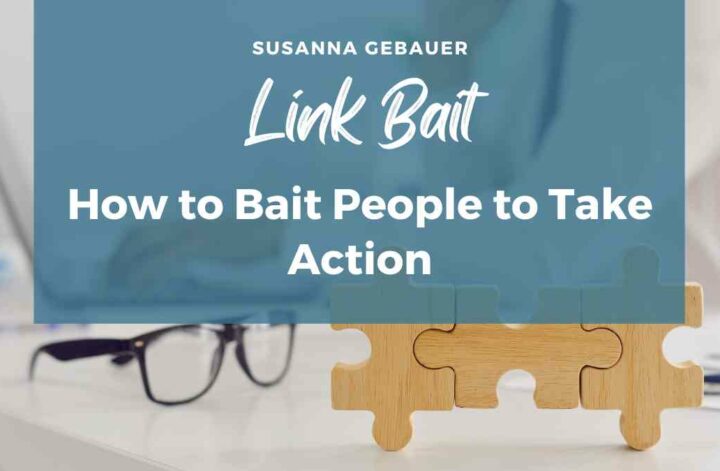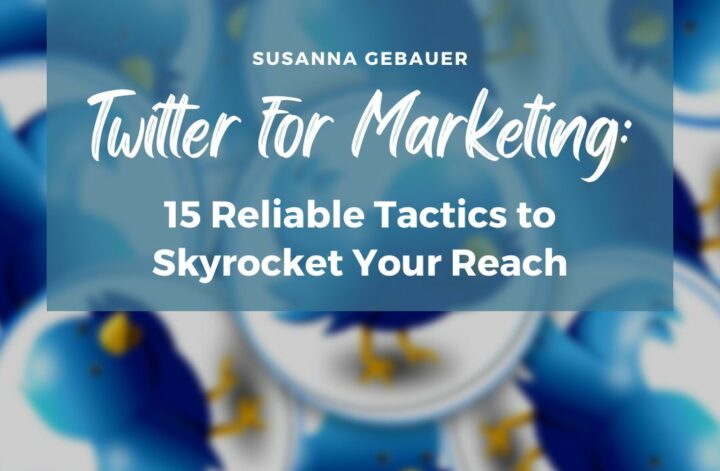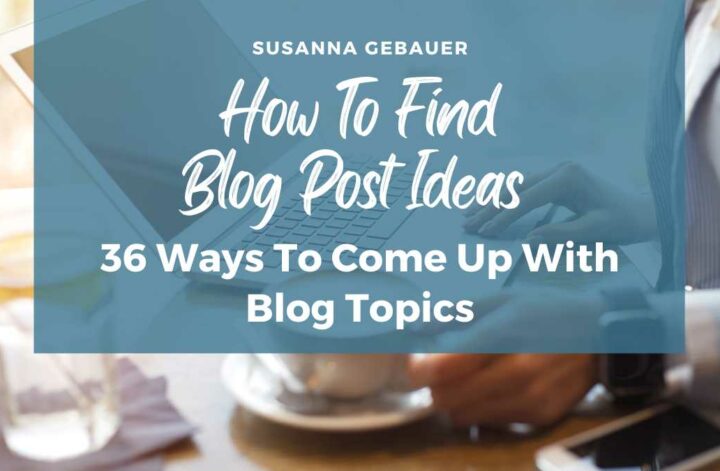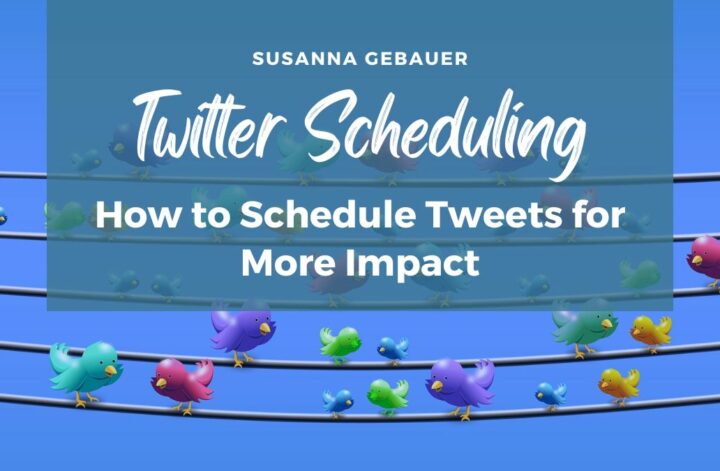Creating content with a goal in mind is at the heart of any content-based marketing strategy. Creating content with the goal of attracting backlinks is called link bait content. This post is about the good, the bad, and some actionable examples of link bait content that you can easily create to earn more back links to your blog.
I admit that my introverted personality does not like link building which includes a lot of email outreach. Naturally, I looked into other concepts of link building. Link bait with all the negativity that may burn in your gut when you hear the term, is a legitimate way of growing links to your blog!
Let’s first understand what we mean by “baiting.”
What does “bait” mean
We talk about bait when we try to catch mice with a trap. But we also talk about “baiting” someone when we deliberately annoy or taunt someone or intentionally make a person angry. In a negative sense, it can mean to trick or trap someone.
I can remember some instances when my brother and I taunted my mother with a snakeskin and baited her to scream or leap back (my mom does not scare easily).
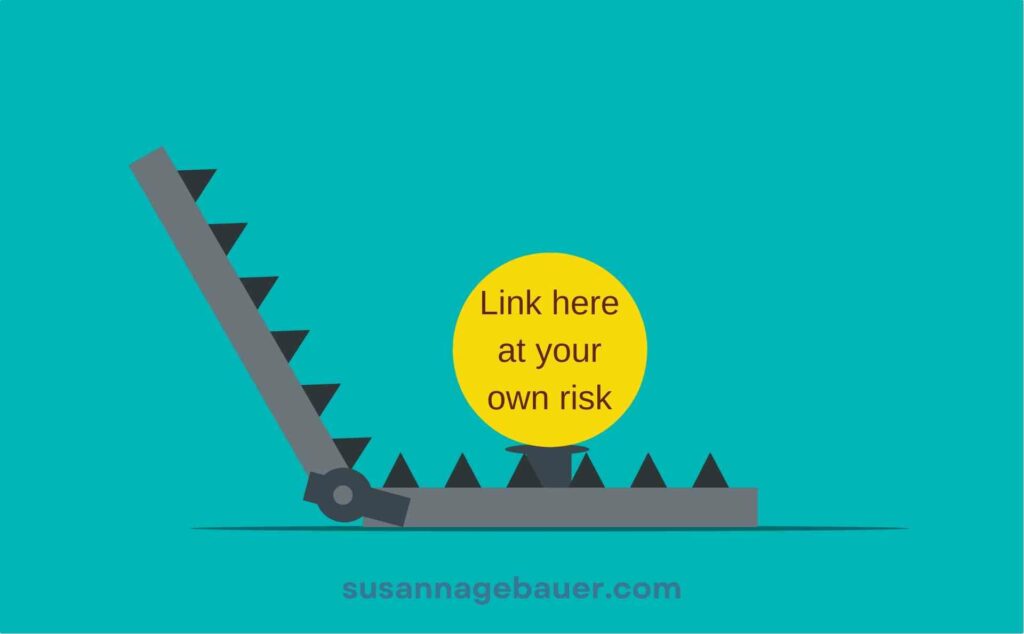
Looking at synonyms for “bait” shows that the term often has a negative feeling to it:
- lure
- tempt
- seduce
- entice
- persuade
- decoy
- betray
- trap
Baiting someone to do something often includes getting this person to take an action that may not be in their best interest. But not all baiting needs to be negative…
What is link bait?
Link bait describes the process AND the content of luring people to link to your website. Usually, this involves some content creation with the goal of making people link to this content.
While I already mentioned that “baiting” people to do something often has a negative touch, link bait does not have to be fishy or shady if the content you create is good enough to justify the links.
A complete blog post can work as link bait, for instance, a provocative piece or a piece of content with a controversial opinion.
Visuals often work well as link bait as other bloggers re-post the images in their posts with a link to the source.
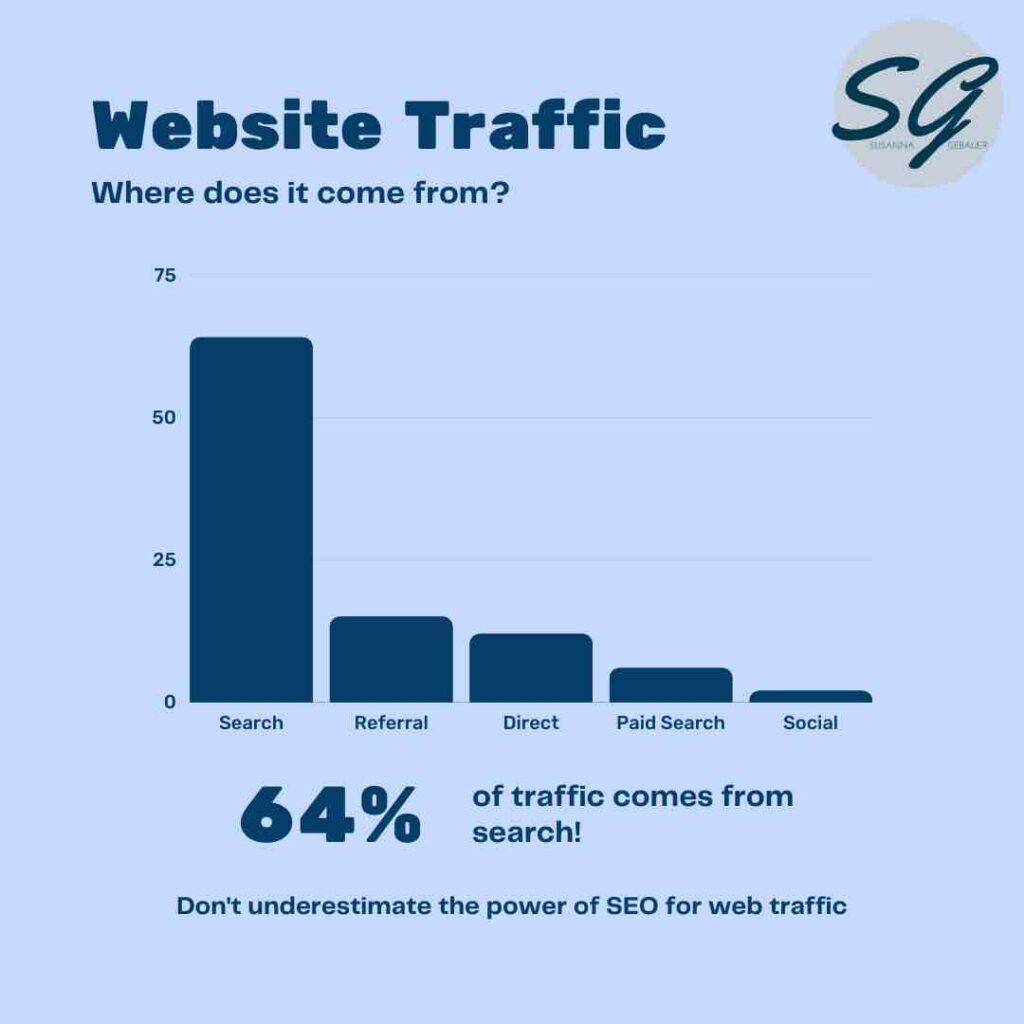
Why is link bait important?
Search traffic is the number one source for website and blog traffic. But the competition is fierce and if you want to rank for relevant keywords, you need some links to your website. A few links can already make a huge difference.
If you are looking for traffic from search engines you will look into link-building options sooner or later. But most tactics to earn backlinks are time-consuming. It is far more desirable to have people link back to your content of their own free will.
And that is what link bait aims for: Get people to link to your content.
Link bait is a legitimate way of increasing the links to your website in a natural way. Even if you create content with the purpose of making people link to it, all the links you earn through it are legitimate links. If your content is great and provides value, having people link to it is nothing shady or in terms of SEO black hat or grey.
How does link bait work?
The idea behind link bait is simple:
- create link-worthy content
- promote the content
- see other people link to your content
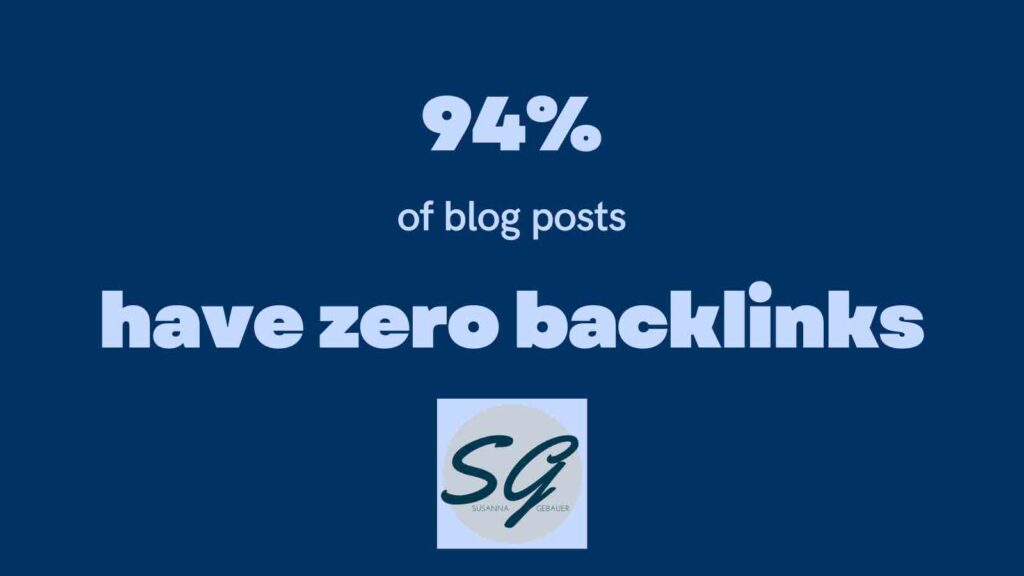
But link baiting is a lot more complex than that. Most blog posts are created with the aim of being link-worthy, yet, most blog posts never attract any backlinks.
Creating content with the goal of attracting backlinks usually takes a little more and different considerations:
- What type of content can you produce that people like to link back to? The answer often is visuals like Memes or images with quotes, facts or numbers.
- What are people interested in so that they would like to mention it in their own content? The answer can be statistics and numbers – if you can do original research, people will gladly use your results in their content.
- What kind of content will inspire people to write a response on their blog? The answer often is provocation, rants, or controversial topics.
The above can yield topics and content that have the power to lure in links by the hundreds: link bait.
To create effective link bait, you first need to understand why people link to other peoples’ content. I can only speak for myself here:
- To provide proof for a statement that I make
- To quote a number from research
- To use an image with a link to the source
- To quote another blogger
- To provide more information on a related topic
The above leads you to the best content that can work as link bait: Research, case studies, images, and in-depth information.
Positive and negative link-baiting
For some people, the term link bait has a negative touch – as other bait content like clickbait also has.
The reason is that in these cases, people are lured to take action, but the content does not live up to it.
This can be, if the provocative statement may attract attention, but the content does not provide enough arguments to make it a legitimate claim. Or the data on images is badly researched and does not hold up to scrutiny.
In the case of clickbait, the content does not provide the information promised in the headline.
It is the same with link bait. It often has a negative reputation. But if you are looking for traffic from search engines, you need backlinks. And you need to consider the potential of your content to attract backlinks.
If you create content with the intent of attracting backlinks, this content is link bait.
- No link bait: most informative content that provides value but is average and there are multiple other websites that have similar information.
- Good link bait: outstanding informative content, better than other websites around this topic, or provides something that other websites don’t: visuals, original research, a different opinion.
- Bad link bait: content without value that is intentionally insulting or provocative content
Examples and Types of Link Bait
Let’s consider what type of content we link to from our blog content. If we take a more thorough look at that we may be able to figure out what kind of content we should publish if we are looking for backlinks.
I admit that the most common reason for me to link to another website is data or statistics, visuals or some additional information on a related topic.
But there are more reasons why content attracts backlinks.
To make it a little clearer what kind of content can serve to intentionally attract links, here are some different examples.
#1 List posts
We all like lists (or most of us) because they come with structure and you can easily skim them and only read the parts that are interesting to you.
As a rule of thumb, you can assume that longer and more comprehensive lists work better as link bait than shorter lists.
You have probably seen many lists of a couple of Google ranking factors. But Brian Dean collected 200 ranking factors and he updates his list on a regular basis. Which brought him insane amounts of backlinks:
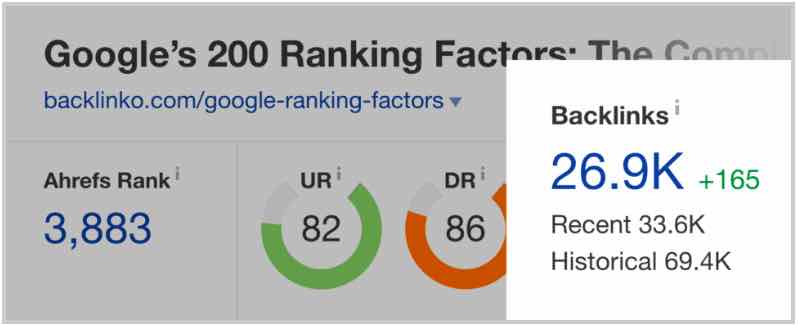
Image Source: Backlinko
#2 Original Research
This is my number one reason to link to a website. Data and statistics that help me prove a point. I try to find the source of the statistic even if I stumble upon the number on a different website first.
I know producing real data can be a time-consuming job. It will also require some help from others to answer your questions and become part of the research. Something that becomes easier if you are already well connected in your niche and have a community you can ask.
You can also use a tool to analyze data and create your own study as Backlinko did with this article about Google search results.
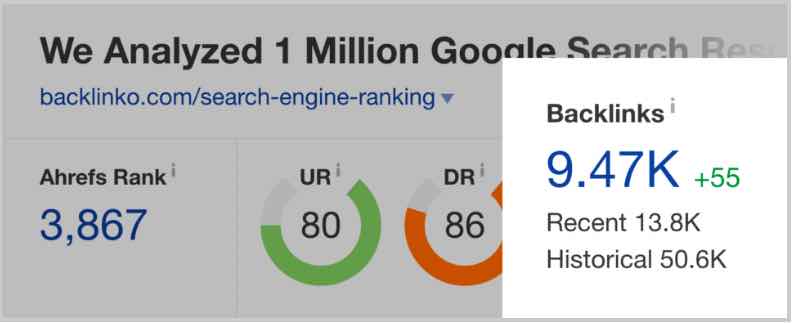
#3 Case studies
Case studies work in a similar way as original research. Hopefully, they provide some measurable results and experiences.
If case studies provide some unique insights people will gladly link to them as reference and proof.
#4 Controversial content
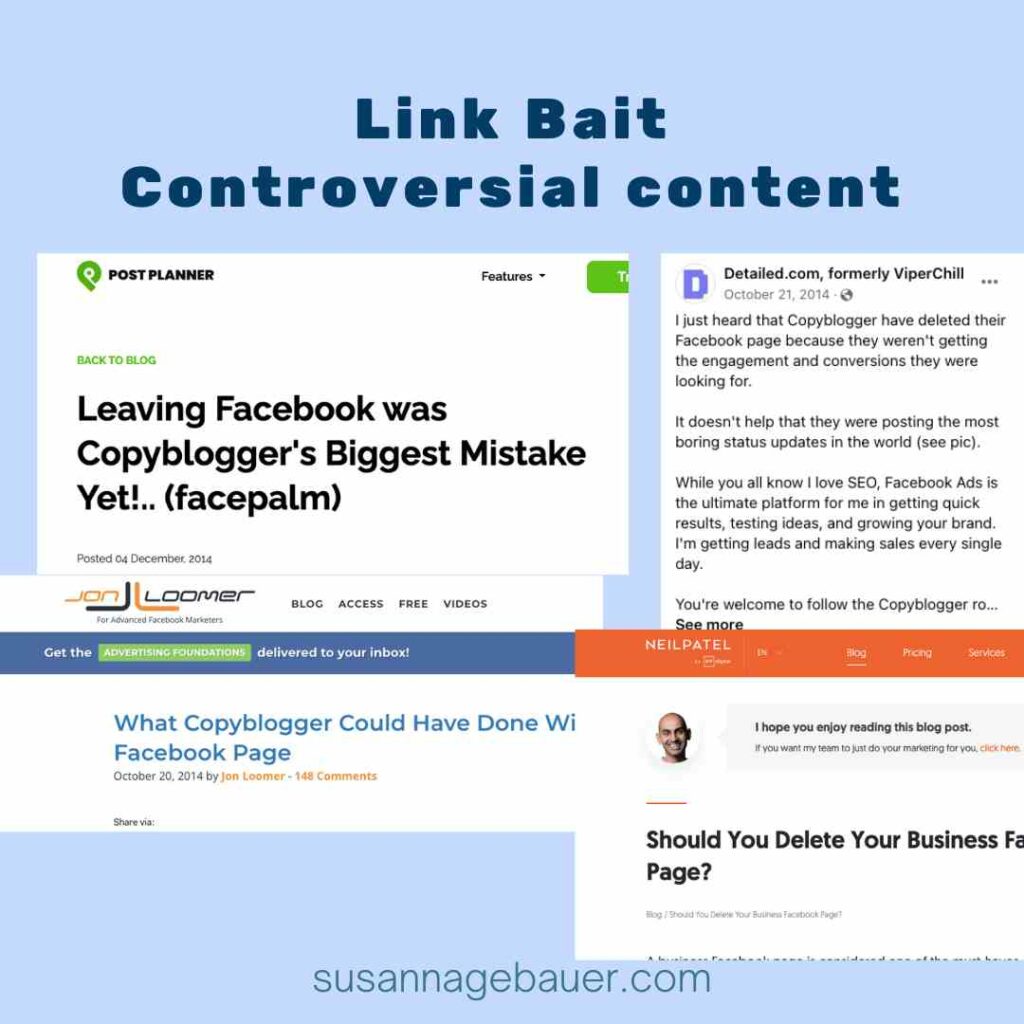
In 2014 Copyblogger (a household name in content marketing) announced they would be deleting their Facebook page. Back then, that was a bold move and many marketers thought they had lost their minds. And wrote about it.
Since Copyblogger had already deleted the blog commenting function in another controversial move, people could not discuss the topic in comments on the original blog post. The result was a flood of blog posts all linking to that original announcement.
If the intention was to earn backlinks, this piece of content did achieve its goal.
Not all controversial content works for link bait – and not everybody can write a good provocation without pi$$ing people off.
If you are doing something out of the ordinary, you can try your hand at this. But provocation for the sake of link bait can quickly turn into negative link bait.
#5 Infographics
I am not so sure if this still works so well but there was a time when Infographics were all the rage. Pinterest was flooded with them and people loved sharing them.
Many people created Infographics and offered them to other blogs with a little introductory text – always linking back to the original blog that published the Infographic first. Which made Infographics a valuable link-building tool.
Personally, I don’t like Infographics so much. I would go more for smaller graphics each with one fact, number, or tip. But that may just be me.
If you want to use Infographics to build links you have to choose your topic with care, create highly informative graphics, and promote the hell out of it. A good Infographic is well-structured and contains statistics, data, and interesting facts.
#6 Visual content
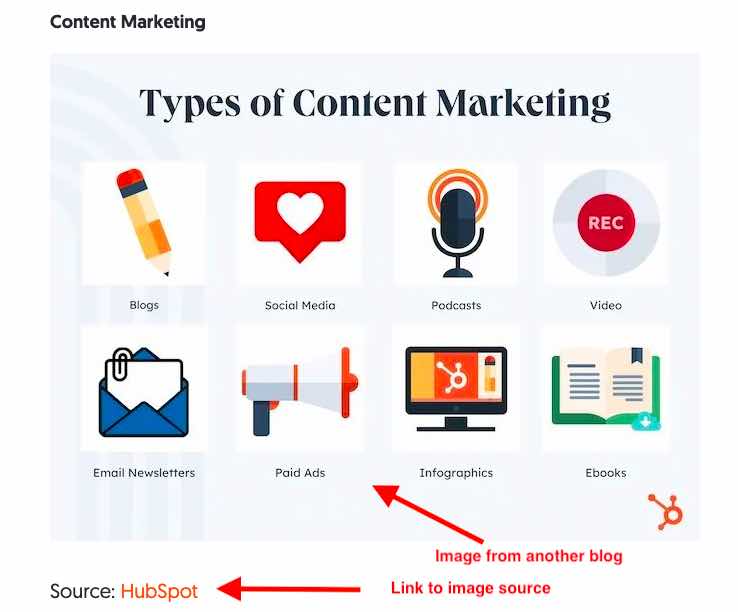
Bloggers are always on the lookout for visuals to add to their content. Because images have tremendous power in content!
With the graphics tools that even non-designers like me can use, we can create our own images. And we should do that – because other bloggers may want to use them and will link back to your images.
Many bloggers are happy to share existing images – with a link back to the source. And that is your chance to earn backlinks if you create original images for your blog posts.
If you combine original research with images that display the results from your research you have the perfect starting point to attract backlinks. Your images function as link bait.
#7 Humorous content
Humorous content like memes or GIFs works similarly to other visual content. Bloggers like to use them in their blog content and will link to the source.
#8 Tools, Surveys, Quizzes
Sure, not everybody can create highly sophisticated tools. And that is not necessary. But some simple tools out there are clearly functioning as link bait:
- Headline analyzer by Monsterinsights
- Email Subject line tester by CoSchedule
- Blog ideas generator by Hubspot
#9 Roundups
Expert roundups gather the opinions of many influencers and experts in one piece of content. It is a ton of work to create an expert roundup. The reason this works as marketing content is that many of the experts will help you promote this content.
They will share it on their social media channels and some of them will link to it.
Roundups usually are not the best way to attract thousands of backlinks. But if done right they come with an exchange of marketing power through shares and links.
Creating effective link bait
Before you start creating your link bait content, you need to understand why people would link to your content. What can you provide that is outstanding enough to attract links?
Decide on the type of content, and find the reason for people to link to it.
Choose a topic that is interesting and relevant to your audience.
Your content has to provide something link-worthy that the existing content around the same topic out there does not have. That can be an opinion, research, a case study, or visuals.
Make sure your content is high-quality and well-written. Nobody is going to link to crappy content even if it contains something interesting.
Use a catchy title, structure, and eye-catching images.
The title will help with promotion, the structure will help people find what they are looking for, and images can be used to attract the links.
Promote your content on social media and other channels.
Nobody is going to link to your content if they don’t know it exists. The better your content distribution the more likely is it that people will find it and start linking to it.
Shareable content has an easier time finding an audience. Consider sending it out to your email list and contact people who may be willing to help with the distribution.
Measure the success of your link bait campaign.
The first place to look for results is your Google search console. How is your piece of content doing? Did you earn some links to your content?
If you want to dig deeper into the link structure, more sophisticated SEO tools like Ahrefs will be the place to go. The analysis earlier in this post for the Backlinko articles is from Ahrefs.
Other types of bait content
There is other “bait content” out there that tries to lure you to take action. You may have heard of a couple of them.
Clickbait:
This type of content uses lurid headlines to get people to click through to the actual content. Many websites have built a business around clickbait content. Examples are Buzzfeed,
Clickbait websites and content have a poor reputation as often the content does not deliver on the promises the headlines make.
While content marketers often focus too much on the value of the content they create and neglect their headlines, clickbait websites often focus mainly on the headlines and don’t care very much about the value of the content.
Engagement bait:
This type of content focuses on getting engagement in the form of votes, shares, comments, tags, clicks, and likes. Since social networks use an algorithm to decide which posts to show in the feed of their users that focuses on engagement, engagement bait posts have become the new common in platforms like Twitter and Instagram.
I would categorize quote posts and questions that are not related to the niche as engagement bait posts. These posts don’t add to your authority, authenticity, or community. The only purpose of these quotes and questions is engagement for the sake of gaming the social media algorithm.

These engagement baits come in many forms. It can be stupid riddles or claims that are easily contradicted.
Comment bait is a special form of engagement bait where the main goal is getting comments instead of likes and shares.
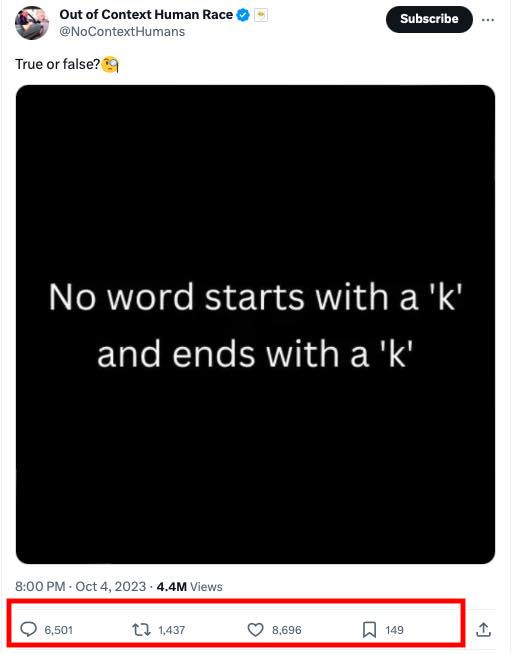
Share bait
This type of content aims for a very specific action: sharing of content, usually of a social media post.
It can be a call to action like: “Share if you agree!”, it can be used in a contest as part of the requirements to enter the raffle “For a chance to win, comment on this post, like and share this post.”
I’ve seen freebie offers on Twitter/X where people are asked to share a post and comment to get access to the piece of content.
Subscription bait
On Twitter, you can also see many tweets that try to lure people to subscribe to an email list. Most of the time this is achieved through a freebie offer which you only get if you enter your email address. This is similar to lead magnet offers on blogs.
Link baiting is not always bad
While content created by baiting people to do something often has a shady touch to it, that is not necessary.
If you deliver on the promise you make with your content and provide a ton of value so that your content earns the links and lives up to the attention it gets through the links, then link bait content is a great way to build links to a blog or website.
As always: If you provide enough value, you can expect something in return. In the case of link bait content, it’s links that will help you increase your search traffic.

